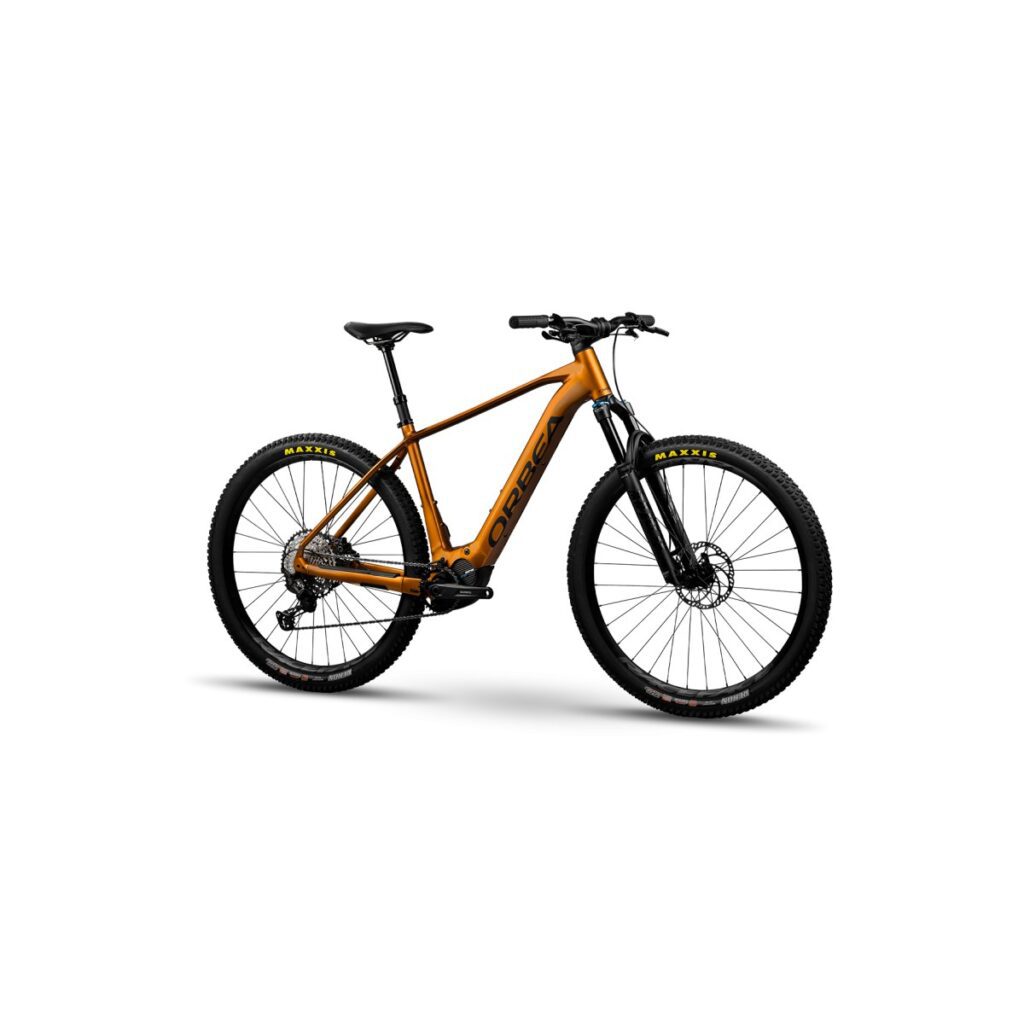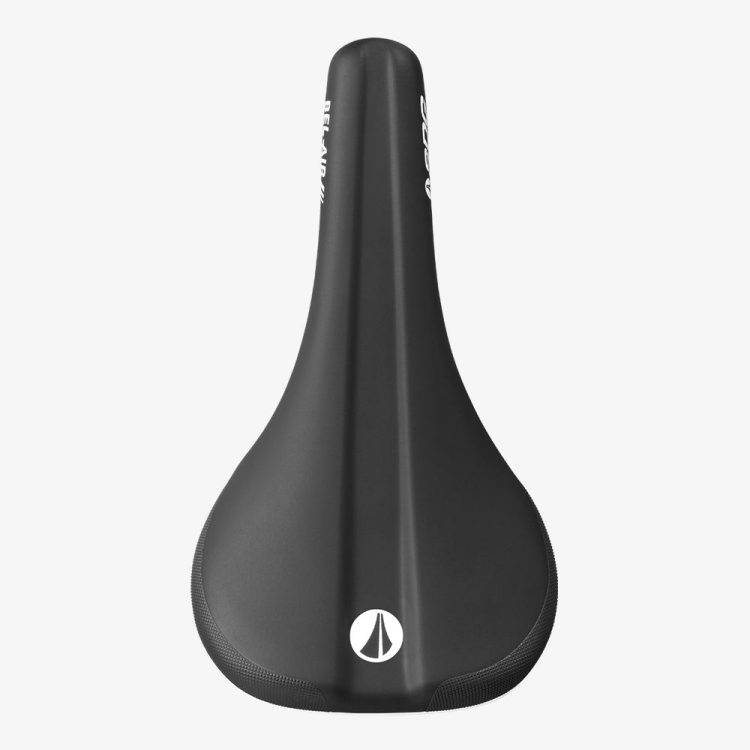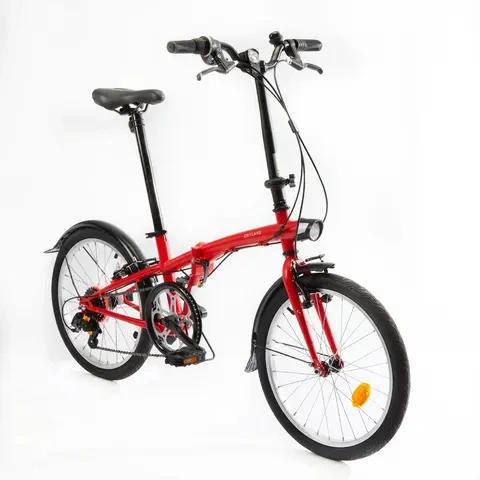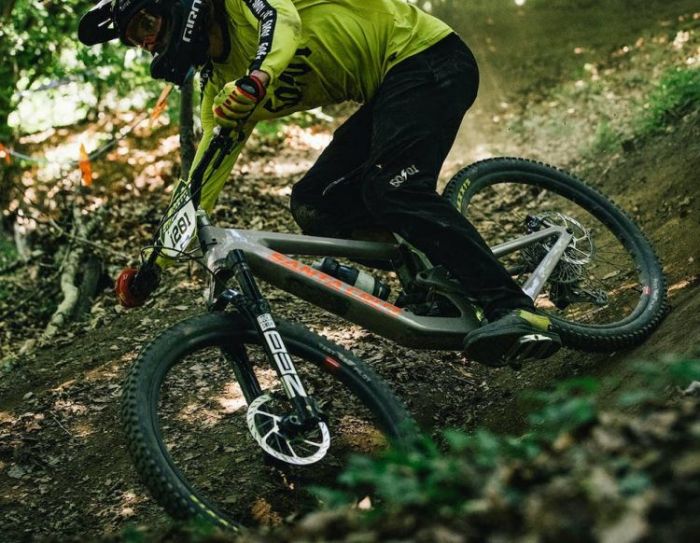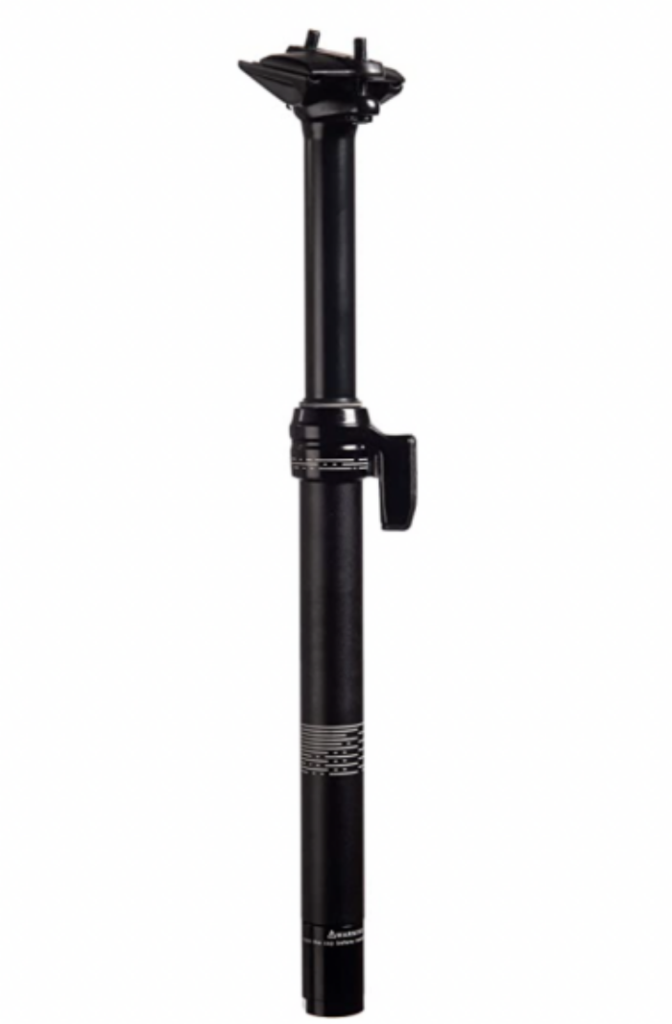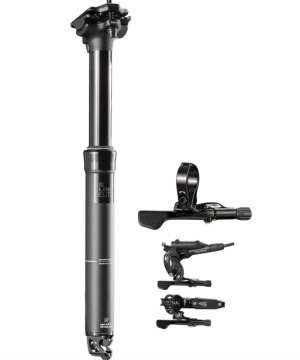We’ve selected the 9 best mountain bike rear shock for your reference.
A bicycle rear shock system is a device designed between the bicycle frame and the rear wheel that reduces the impact felt by the rider during travel due to bumpy road surfaces. This damping system is generally composed of springs, shocks, air pressure, and other components that absorb road shock and reduce the impact on the rider. It is designed to improve riding comfort and control, especially when riding uneven surfaces or mountain biking off-road regularly. The rear shock system can reduce rider fatigue and increase vehicle stability, thus improving riding efficiency and safety.

These shock systems are extensively tested and proven, so they provide excellent shock absorption performance, making you more comfortable and stable on trail rides. Choosing the right shock system for you requires consideration of your personal riding needs, budget, and preferences. It is recommended that you carefully compare the features and performance of various models before purchasing to find the best shock system for you. Please consider what features you need, and if you are still not sure, you can skip to the end to see some of our mountain bike rear shock buying advice for you.
We also offer bike fork reviews that provide a comfortable cushioning feel for the front wheel and hands of the bike. If you like our articles, feel free to subscribe to us to get the most up-to-date information on new reviews!
Mountain Bike Rear Shock List
| Serial number | Name | Price | Size | Itinerary | Adjustment |
| 1 | RockShox Super Deluxe Ultimate RCT | $373.89 | 165-250 | 37.5-75 | Low-speed compression, rebound |
| 2 | DVO Topaz T3 Air | $500 | 165-230 | 40-65 | Three modes, low-speed compression lever |
| 3 | Fox Float DPS Factory | $539 | 165-230 | 38-65 | Rebound, open mode low-speed compression, three-position low-speed compression lever |
| 4 | Cane Creek DBAir IL | $579.99 | 184-216 | 42-63 | High and low speed rebound and compression, climbing switch |
| 5 | Fox Float X2 Factory | $669 | 222-267 | 70-89 | High and low speed rebound and compression |
| 6 | RockShox Monarch RT3 Rear Shock | $334.38 | 219-380 | 38-57 | Gas spring, external rebound, 3-position compression |
| 7 | Marzocchi Bomber CR Rear Shock | $309 | 130-200 | 65 | RVS (Rod Valve System) |
| 8 | Cane Creek Dbair Il Rear Shock | $459.99 | 210-230 | 50-70 | Dual tube independent compression |
| 9 | Rockshox Monarch Plus RC3 DB Rear Shock | $548 | 190-216 | 51-60 | Gas spring External rebound, 3-position compression |
1. RockShox Super Deluxe Ultimate RCT
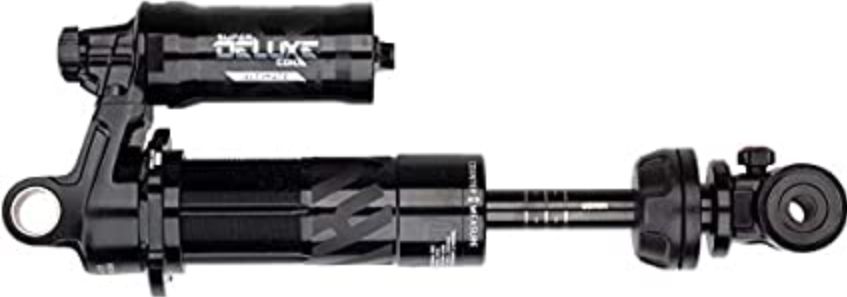
- Price: $373.89
- Size: 165-250
- Travel: 37.5-75mm
- Adjustment: Low-speed compression, rebound
- What we like about it: Excellent grip and total control.
- What we don’t like about it: The non-adjustable compression travel.
This mountain bike rear shock system features high-performance dampers and air springs that can easily handle a variety of different sites and road conditions. It is highly adjustable and has excellent stability. The system can be adjusted in a variety of ways to meet the rider’s needs in different road conditions. At the same time, its stability ensures comfort and reliability during riding, whether on technical descents, high-speed rides, or bumpy mountain roads.
However, the downside of the RockShox Super Deluxe Ultimate RCT is its high maintenance cost. Although the system performs well, it requires regular maintenance and servicing. In addition, if parts need to be replaced or repairs need to be made, the cost will be higher. Therefore, riders are advised to consider these additional costs before making a purchase. Overall, the RockShox Super Deluxe Ultimate RCT is an excellent rear shock system for mountain bikes.
2. DVO Topaz T3 Air
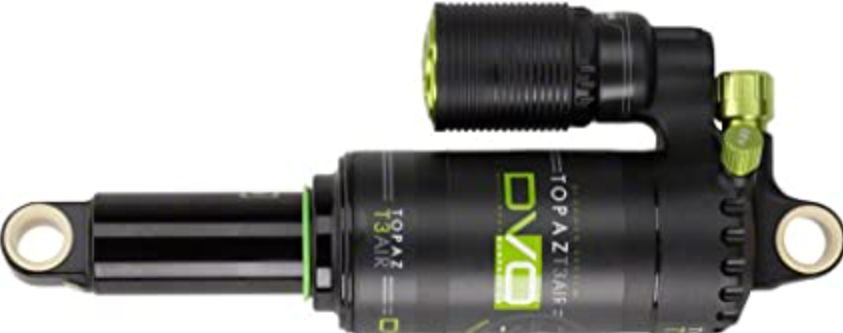
- Price: $500
- Adjustment: three modes, low-speed compression lever
- Size: 165-230mm
- Travel: 40-65mm
- What we like about it: Subtle adjustment of the switch.
- What we don’t like about it: Unconventional tuning standards.
The DVO Topaz T3 Air is a rear shock system for mountain bikes with a subtle adjustment switch that provides superior comfort and control. Enables the rider to fine-tune it for different road conditions and riding needs.
However, the downside of the DVO Topaz T3 Air is that it has a more unconventional tuning standard. The system’s tuning options and standards are not quite the same as other brands of rear shock systems, requiring additional learning and understanding on the part of the rider to properly tune and maintain. But if you need excellent control, I think it will be perfect after getting used to this tuning standard.
3. Fox Float DPS Factory

- Price: $539
- Adjustment: Rebound, open mode low-speed compression, three-position low-speed compression lever
- Size: 165-230mm
- Travel: 38-65mm
- What we like about it: Fine compression adjustment for excellent sensitivity.
- What we don’t like about it: The coating costs more.
Fine compression adjustment is its greatest strength, allowing for excellent sensitivity and responsiveness. The system allows for a variety of different compression adjustments, including “open”, “medium” and “stiff” options, allowing the rider to fine-tune the system for different road conditions and riding needs. The system allows the rider to fine-tune it to different road conditions and riding needs.
However, the downside of Fox Float DPS Factory is the high cost of its coating. The system uses a high-quality coating, and to achieve this effect, it increases the manufacturing cost, which results in a higher selling price. To solve this problem, riders are advised to fully consider their budget and performance needs before purchasing and to choose the appropriate rear shock system for their situation.
4. Cane Creek DBAir IL
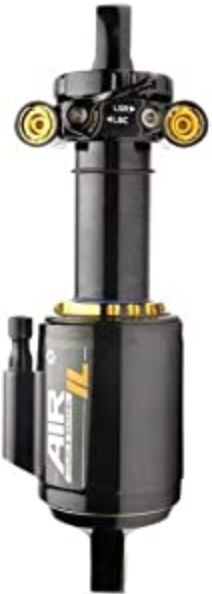
- Price: $579.99
- Size: 184-216
- Travel: 42-63mm
- Adjustment: High and low-speed rebound and compression, climbing switch
- What we like about it: Excellent climb and descent control.
- What we don’t like about it: The bumps are more intense.
It has excellent climbing and descending control. When climbing, it can provide stable support and response to make your uphill climb easier. When descending, it can effectively absorb bumps and vibrations, providing a smoother and more fluid riding experience. Therefore, the Cane Creek DBAir IL is a highly recommended product.
However, the Cane Creek DBAir IL also has some drawbacks. One of the most notable is that it has a strong bumpy feel. Especially when riding at high speed, you may feel some bumps and shakes, which will affect your riding experience and control. However, this problem can be solved by adjusting the settings of the shock. Therefore, if you are looking for a high-performance and reliable shock system, Cane Creek DBAir IL is a good choice.
5. Fox Float X2 Factory

- Price: $669
- Size: 222-267mm
- Travel: 70-89mm
- Adjustment: high and low-speed rebound and compression
- What we like about it: The highly adjustable air pressure setting.
- What we don’t like about it: It’s expensive and not for newbies.
The highly adjustable air pressure setting can be customized according to individual needs and preferences. Secondly, it has an excellent damping system that provides a smooth and fluid riding experience, especially at high speeds and on rough downhill sections. Therefore, the Fox Float X2 Factory is a highly recommended high-performance shock system.
However, the Fox Float X2 Factory also has some drawbacks. Most notably, it is relatively expensive and not well suited for novice riders or those on a budget. All these problems can be solved by choosing the right seller and getting some professional training. If you are an experienced and demanding rider with a budget, then the Fox Float X2 Factory is an option worth considering!
6. RockShox Monarch RT3 Rear Shock

- Price: $334.38
- Weight: 215g
- Adjustment: Gas spring
- Damping: External rebound, 3-position compression
- What we like about it: Lightweight and shock absorbing for short distances.
- What we don’t like about it: The descent technique doesn’t fit the limit.
This is a lightweight mountain bike rear shock system, especially for short and less technically challenging routes. First of all, it is very light, which makes the whole vehicle more flexible and easy to handle. Secondly, it has excellent shock absorption, which can effectively absorb the bumps and vibrations on the road, providing a smooth and comfortable riding experience.
However, the RockShox Monarch RT3 Rear Shock also has some drawbacks. The most notable of these is that it is not suitable for extreme descending techniques. Since its shock effect is mainly achieved through air pressure and springs, it has a short maximum travel, which means that it cannot effectively absorb big jumps and inclines. Therefore, if you do a lot of riding with extreme descent technology, the RockShox Monarch RT3 Rear Shock may not be the best choice. However, if you mainly do short and less technically challenging rides, it’s still a great choice.
7. Marzocchi Bomber CR Rear Shock
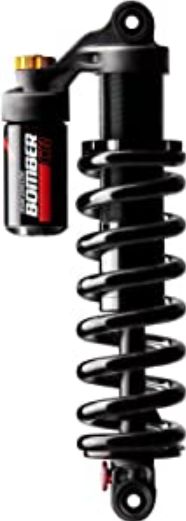
- Price: $309
- Adjustment: coil spring
- Damping: RVS (Rod Valve System)
- Weight: 924g
- What we like about it: Affordable price.
- What we don’t like about it: Coil shock springs are heavier than air cushioning.
Fox’s Van r coilover shock has always been a favorite value-for-money product for overweight riders, but now it has been discontinued. You don’t have to worry about that, though, because the new Marzocchi’s CR shocks can accomplish the same impact cushioning, and they differ only because of the different stickers on the surface. As a bonus, you can use the dials for this purpose for low-speed compression to adjust the damping range, allowing you to pedal and bounce on a particularly active bike.
Coil shock springs are solid cushioning units and will be much heavier compared to air shock springs. You may have to work harder for this to lift the whole bike. But all in all, the impressive grip and very hot friendly unit, and most importantly, the low price make it very suitable for those riders who are new to the mountains.
8. Cane Creek Dbair Il Rear Shock

- Price: $459.99
- Adjustment: Gas spring
- Damping: Double tube independent compression
- Weight: 509g
- What we like about it: Soft cushioning feel, long travel.
- What we didn’t like about it: The inability to filter out the smaller bumps.
This is a company that uses a dual tube design for continuous oil pressure to provide cushioning. High-speed and low-speed rebounds are independently adjustable within the compressible range as a way to accommodate all riders. The climb switch adds low-speed rebound and low-speed compression for an efficient and quiet pedal swing, while still allowing the rear end to be responsive enough to get an impressive grip.
There is not enough filtering out for those small bumps. Despite the full impact cushioning, those small bumps are still very noticeable. But a large percentage of riders think that’s the fun part of riding a mountain bike, the small bumps that allow the rider to feel the vibrations of the road more clearly, a feeling they call “road feel”. So if you’re one of those riders who needs a little perception to get the action, then this mountain bike rear shock will be perfect for you.
9. Rockshox Monarch Plus RC3 DB Rear Shock
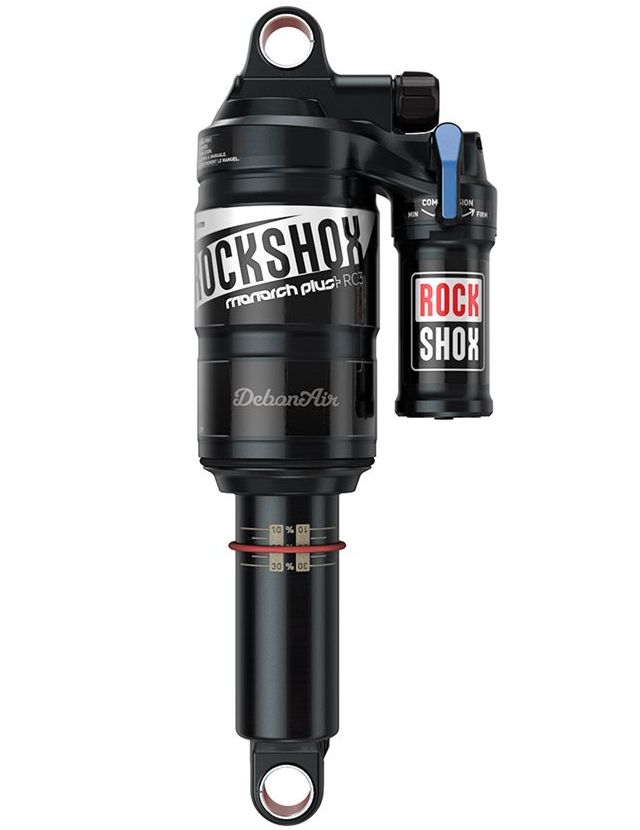
- Price: $548
- Adjustment: Gas spring
- Damping: External rebound, 3-position compression
- Weight: 335g
- What we like about it: It can handle big impacts well, with multiple adjustable travels.
- What we don’t like about it: It’s relatively expensive.
If you happen to be an enduro racer and like a punchy ride, then this mountain bike rear shock will be a good choice for you. You’ll notice it’s not too different from the RT3, and the Plus version is capable of doing well on the track, the difference being that the Plus has a larger air tank and backpack reservoir, and the oversized negative air chamber makes it very soft when cushioned.
Price is relatively speaking its disadvantage, powerful technology in exchange for a high price is often high. The price is not acceptable to most mountain bikers, but no one says it’s not worth the price. So as long as you have it in your pocket, this quality rear shock equipment will give you a comfortable cushioning experience like never before.
How to choose the most suitable rear shock absorber for mountain bikes?
Frame and suspension design has always been up to date, so even the lowest-end full-suspension mountain bikes offer good cushioning performance. Suspension design refers to the frame of the bike itself and the way the rear triangle moves. The performance of the suspension depends on the frame design of the bike and the combined force of the rear shock.
When the tires hit the ground or fall from the air, the shock absorber is responsible for absorbing the energy of the fall thus providing a smooth run. Therefore, unless you are using a hardtail mountain bike, how you choose a proper shock absorber is a critical factor in how stable you are when dealing with the impact.
Spring Shock Absorber
Shock absorbers can be gas springs or coil springs, and each type has its advantages and disadvantages.
Air Spring
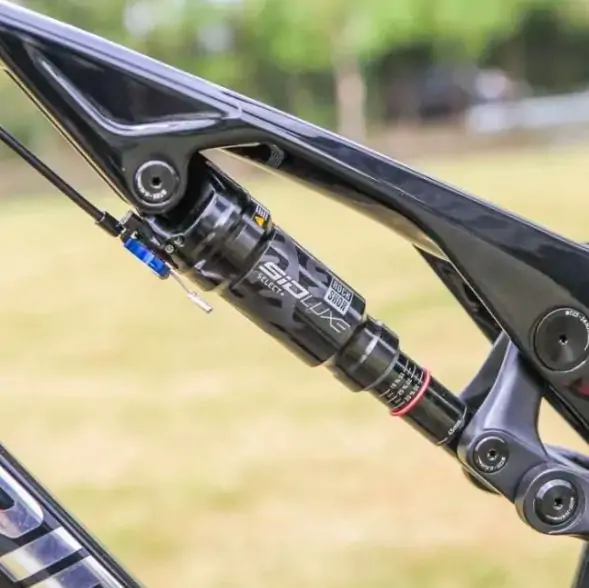
is standard on most XC bikes and trail bikes, providing lighter weight, higher spring stiffness, and easy adjustment that can be achieved by changing air pressure. Because the spring uses air compression to work, it becomes increasingly difficult to compress the shock as you move. The air shock will “accelerate” at the end of the travel to prevent violent bottoming out.
Coil Shock Absorbers

With metal springs instead of air shocks, this shock is the right choice for those looking for a softer suspension system as well as for downhill and enduro racers. However, the coil shock will be heavier but give a softer feel on the trails. The suspension with coil shocks differs from air springs in that it is linear throughout its length, which also means that it does not have variations at the end as air springs do.
The only way to adjust spring stiffness is to use a different spring installed, and it is important to match the rider’s weight to the strength of the spring for better performance.
There are also progressive springs available, which rise gradually at the end of the travel just like air-spring shocks. All shocks use an oil pressure damping system, and the damping prevents the spring inside the shock from bouncing irregularly and uncontrollably like a normal spring. You probably often see those back-loaded oil reservoirs on shocks, which are designed to ensure that the rear shock system remains efficient during long rides and descents.
Length
Just in case you’re hesitant about this, I’ll start by saying that the length of the bike’s cushioning may not have much to do with its cushioning travel. Perhaps you can find a rear shock frame with 100mm of travel and one with 160mm, but they both have the same shock. However, not every shock is the same length, so it is critical to get the correct length shock for your frame or you may not even be able to mount it on your bike.
You need to note two measurements, the first is the point-to-point length of the frame when the bike is mounted. And this is the measurement between the two points of the rear shock. In other words, this is the key to ensuring that it can be mounted. It is the point at which the bolts on the shock are fixed to the corresponding position on the frame.
Another thing to measure is the length of travel, which is the length of the strut that goes into the shock body. Two different shocks may have the same length, but not the same travel of the shock. If you are looking at something that has a different dimension than the current shock, check if your frame as a whole supports the installation of such a shock.
Size
Mountain bike rear shocks are available in a range of different sizes, switching from the oldest and most traditional 8.5 x 2.5 inches to the new modern sizes in units of 210 x 55 mm, aka metric.
We will break down these dimensions for you: a shock with dimensions 210 x 55 means a length of 210 mm travel of 55 mm. The length of the electric shock is measured from eyelet to eyelet of the bolt. The important thing to note here is that the distance of the eyelet does not determine its cushioning travel. The most important thing is that you need to choose the right length of travel for your bike.
Hardware
If you have determined the type of rear shock you have and have determined what size it should be, the other thing you need to take into account is the mounting hardware. Simply put, mounting hardware is what is needed to securely attach the shock to the frame, and every frame is designed differently and has different impact forces.
So your bike mounting hardware will always need to be purchased separately, and finding out all your needs may require a certain amount of expertise that can be a nightmare, so you’re better off referring to the manual that came with your bike frame or finding a nearby bike store to help you, and contacting your manufacturer if you have any questions.
Adjustment
You can adjust the spring stiffness of the shock by changing the air pressure level or swapping coils. After installation, you can adjust it according to your feeling after riding.

High-speed compression allows you to provide cushioning during large impacts or fast impacts, and it prevents fast and large span impacts from bottoming out the cushioning travel.
Low-speed compression can cope with the flexibility of the smaller bumps that arise when weaving on trails, and the rebound is damped to allow the impact to return at a very gentle speed.
Too much bounce will cause your rear wheel to jump up from the object and will leave you vacant, while too little bounce will in turn allow the cushioned travel to pile up under repeated impacts, still leading to bottoming out.
Compatibility
The last and more important point is that you need to make sure that the new shock is used in conjunction with your frame, which may have the same travel as your bike’s previous one, and as mentioned above, you may still not be able to install it properly. Or if your new shock is equipped with a backing reservoir and the old one is not, the protruding part will also most likely affect your installation.


And you may encounter similar problems when you change from air compression damping to spring compression damping, contacting your frame manufacturer can help you anticipate these problems in advance.
Cautions
When looking for or upgrading your rear shock, it’s often a complicated option and you need to consider a very large number of things for it. From finding information to how you want your suspension to feel and how you want your suspension to handle your ride. Here’s a list of information you should look for and questions you should answer before seeking an upgrade.
- Cushion size
- Dimensions of the hardware (width and diameter of the top as well as the bottom)
- Compatibility
- Travel length selection
- Clearance (frame clearance or travel clearance)
- Bikes designed for coils or air
- Coil shock or air shock
- Depends on the bike design.
- Depends on the rider’s preference.
- Brand and expectation impact model
Summary
In mountain biking, the rear shock is a very important presence for all but the simple off-road XC hardtail bikes. It determines how much comfort your rear wheel and your butt can have during the ride, and you may not know exactly what form of rear shock system you need or even how much travel to choose for your rear cushioning system. So, in our reviews, you can see a wide variety of products with different travel, different forms, and different prices. Our best advice is to have a clear idea of what you need and from which you can find the best rear shock system for you and your mountain bike. For camping, we’ve found nine of the best mountain bike rear shock systems as of 2023 that will give you a better experience on climbs and descents. By the way, if you want to go riding in well-known terrain or special terrain, you can book your accommodation on IHG Hotels & Resorts. It is not only rich in variety but also easy to operate.
If you still want more reviews on cycling component products, such as the best mountain bike fork, you can make your mountain bike’s front shock also has a very good performance.
Finally, if you like our content, feel free to share it with your friends! If our content is helpful to you, you can click the email subscribe button below! Thank you for your support!

